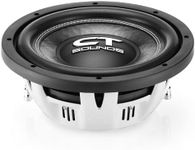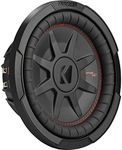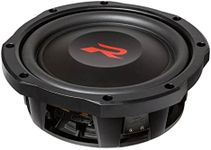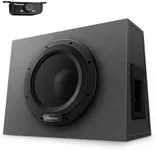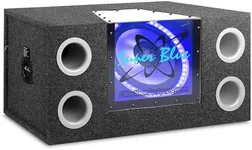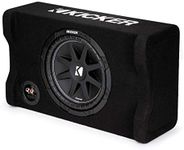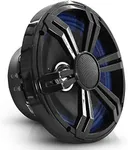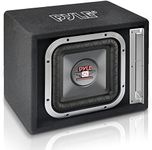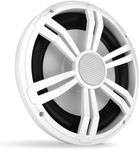Buying Guide for the Best Shallow 10 Subwoofer
Choosing the right shallow 10-inch subwoofer can significantly enhance your audio experience, especially if you have limited space in your vehicle or home. Shallow subwoofers are designed to fit in tight spaces while still delivering powerful bass. To make the best choice, you need to understand the key specifications and how they align with your needs. Here are the essential specs to consider and how to navigate them.Power Handling (RMS and Peak)Power handling indicates how much power the subwoofer can handle without getting damaged. RMS (Root Mean Square) is the continuous power the subwoofer can handle, while Peak is the maximum power it can handle in short bursts. Higher RMS values mean the subwoofer can handle more continuous power, which is important for consistent performance. If you like loud, powerful bass, look for higher RMS values. For casual listening, moderate RMS values will suffice.
SensitivitySensitivity measures how efficiently the subwoofer converts power into sound, expressed in decibels (dB). Higher sensitivity means the subwoofer can produce more sound with less power. If you have a low-powered amplifier, a subwoofer with higher sensitivity (above 90 dB) will be more efficient. For high-powered systems, sensitivity is less critical but still important for overall performance.
Frequency ResponseFrequency response indicates the range of frequencies the subwoofer can reproduce, measured in Hertz (Hz). A wider frequency range means the subwoofer can produce deeper bass and higher notes. For deep, rich bass, look for subwoofers with a lower end of around 20-30 Hz. If you prefer a balanced sound that includes mid-bass, a range that extends higher, like up to 200 Hz, might be better.
ImpedanceImpedance is the electrical resistance of the subwoofer, measured in ohms. Common values are 2, 4, and 8 ohms. Lower impedance subwoofers (2 ohms) draw more power from the amplifier, which can result in louder sound. However, they require a compatible amplifier. Higher impedance subwoofers (8 ohms) are easier to match with most amplifiers but may not be as loud. Choose based on your amplifier's compatibility and your desired loudness.
Mounting DepthMounting depth is the distance from the mounting surface to the deepest part of the subwoofer. This is crucial for shallow subwoofers as they are designed to fit in tight spaces. Measure the available space in your vehicle or enclosure to ensure the subwoofer will fit. Shallow subwoofers typically have a mounting depth of 3-5 inches. Choose one that fits your space without compromising on other specs.
Enclosure CompatibilityEnclosure compatibility refers to the type of box the subwoofer is designed to work with, such as sealed or ported enclosures. Sealed enclosures provide tight, accurate bass, while ported enclosures offer louder, boomier bass. Consider your sound preference and space constraints. Sealed enclosures are more compact and easier to fit in tight spaces, making them a good match for shallow subwoofers.

